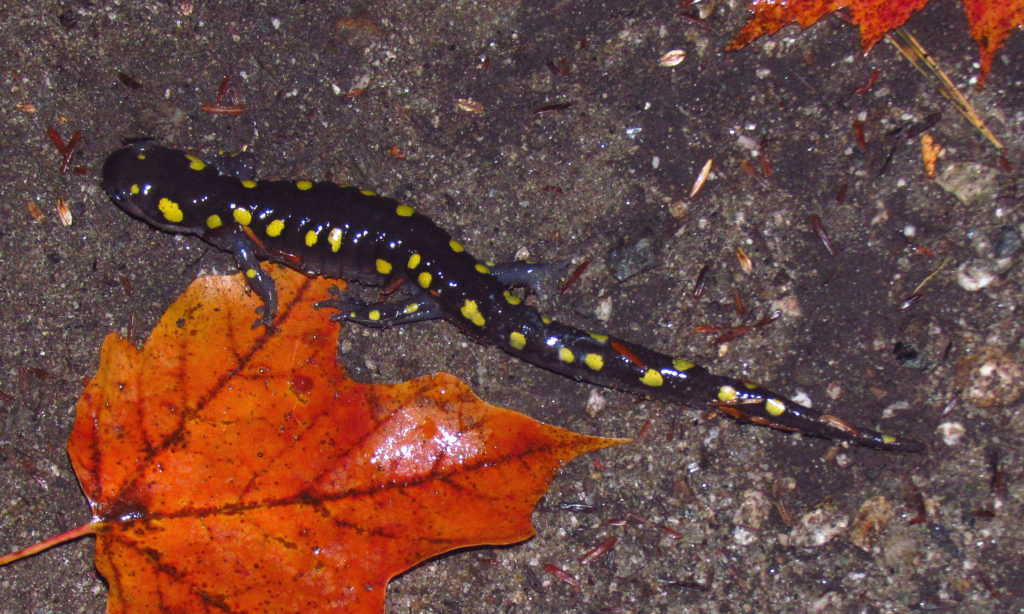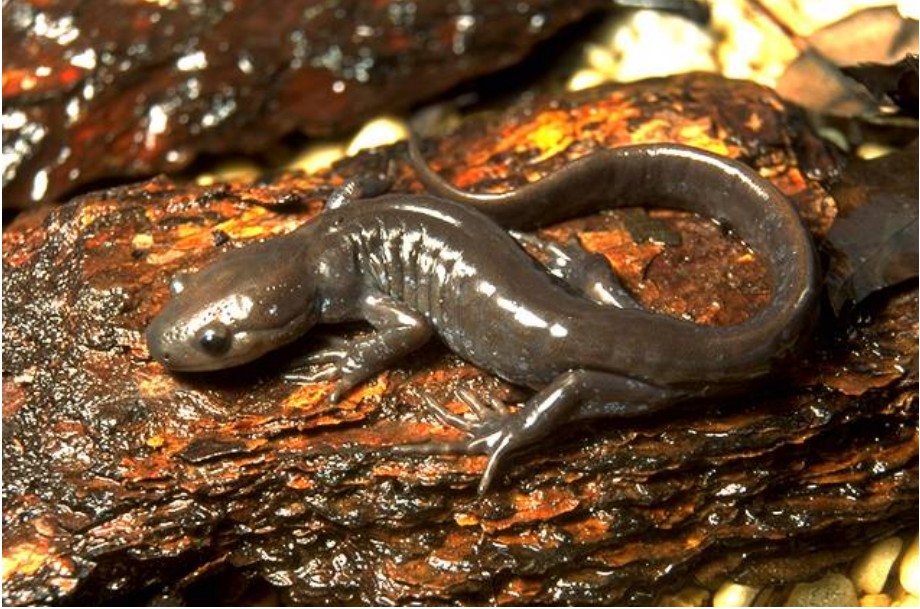PLEASE NOTE: Please help us protect resources in Cuyahoga Valley National Park – including wildlife – by not touching animals and watching where you’re stepping and/or driving.
When the snow starts to melt and rain starts to fall, there’s something to look forward to besides warmer weather: the annual salamander migration! Each spring, salamanders move from their underground hibernation spots to breeding ponds en masse.
Keep reading to learn how to spot migrating salamanders in Cuyahoga Valley National Park.
Migration to Vernal Pools

Like many amphibians, salamanders spend most of the winter hibernating underground. Some species, called mole salamanders, actually spend most of the year underground, so the spring migration is one of the only times you’ll spot these creatures.
While most salamanders have lungs to breathe, many use their skin to breathe as well. Besides making them extra-sensitive to pollutants, this means that they must stay moist at all times. Drying out would mean they could no longer breathe through their skin.
That means that their spring migration almost always takes place in the rain. After a few days of snowmelt and warm rain, temporary ponds called “vernal pools” start to pop up around the park.
During the first warm spring rain—usually around mid- to late March—salamanders leave their hibernation spots and make a beeline for those vernal pools. Under cover of the dark, they will join hundreds of other amphibians in a strange nighttime parade.
Mating Season

After the mating rituals, salamander lay eggs and then typically head back underground, leaving their young to fend for themselves.
When they arrive at vernal pools, salamanders are ready to mate. Males circle, weave, and spiral among the crowd, looking for females. When a male meets a suitable mate, he’ll perform formal courting rituals, nudging the female’s “cheeks” and raising his head under her chin, before depositing sperm packets.
When they hatch in the vernal pools a few weeks later, young salamanders remain where they are for several months. Around mid-summer, when the pools are about to dry up for the season, they lose their gills and head into the world as adult salamanders. Most likely, they’ll burrow into the leaf litter and wait to emerge until the next year as breeding adults.
Tips & Tricks
If you want to see a salamander in CVNP this spring, use these tips to help your search:
- Keep your eye on the weather: When the first warm, spring rains start to fall, it’s a good sign that salamanders will be migrating soon.
- Go at night: Wait until an hour or so after sunset—and don’t forget a flashlight!
- Know what you’re looking for: Search for a list of salamanders in CVNP – maybe you’ll even see a blue-spotted salamander or an Eastern tiger salamander!
- Watch your step: Salamanders can be tricky to spot in the dark, so stay on paths where you can easily see where you’re putting your feet.
Good luck in your search! If you spot a salamander, be sure to tag us on Facebook, Instagram, and Twitter and use the hashtag #forcvnp.





